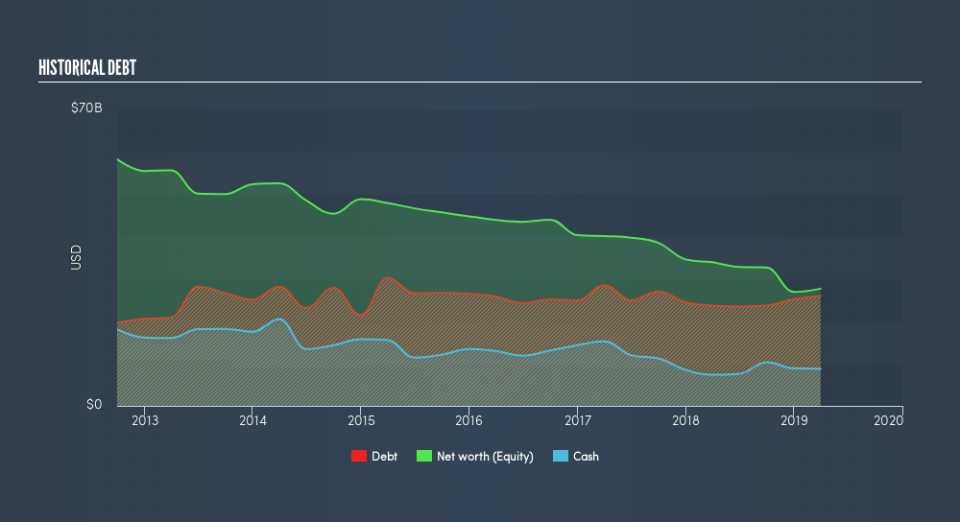What Investors Should Know About Merck & Co., Inc.'s (NYSE:MRK) Financial Strength

Merck & Co., Inc. (NYSE:MRK), a large-cap worth US$209b, comes to mind for investors seeking a strong and reliable stock investment. Market participants who are conscious of risk tend to search for large firms, attracted by the prospect of varied revenue sources and strong returns on capital. But, its financial health remains the key to continued success. Today we will look at Merck’s financial liquidity and debt levels, which are strong indicators for whether the company can weather economic downturns or fund strategic acquisitions for future growth. Note that this information is centred entirely on financial health and is a high-level overview, so I encourage you to look further into MRK here.
View our latest analysis for Merck
Does MRK Produce Much Cash Relative To Its Debt?
MRK's debt levels surged from US$24b to US$27b over the last 12 months , which accounts for long term debt. With this growth in debt, MRK currently has US$8.8b remaining in cash and short-term investments , ready to be used for running the business. Additionally, MRK has produced cash from operations of US$11b over the same time period, resulting in an operating cash to total debt ratio of 41%, indicating that MRK’s current level of operating cash is high enough to cover debt.
Can MRK pay its short-term liabilities?
Looking at MRK’s US$19b in current liabilities, it appears that the company has been able to meet these commitments with a current assets level of US$25b, leading to a 1.37x current account ratio. The current ratio is calculated by dividing current assets by current liabilities. Usually, for Pharmaceuticals companies, this is a suitable ratio since there's a sufficient cash cushion without leaving too much capital idle or in low-earning investments.
Does MRK face the risk of succumbing to its debt-load?
With debt reaching 94% of equity, MRK may be thought of as relatively highly levered. This is common amongst large-cap companies because debt can often be a less expensive alternative to equity due to tax deductibility of interest payments. Accordingly, large companies often have an advantage over small-caps through lower cost of capital due to cheaper financing. We can assess the sustainability of MRK’s debt levels to the test by looking at how well interest payments are covered by earnings. As a rule of thumb, a company should have earnings before interest and tax (EBIT) of at least three times the size of net interest. In MRK's case, the ratio of 26.39x suggests that interest is amply covered. High interest coverage is seen as a responsible and safe practice, which highlights why most investors believe large-caps such as MRK is a safe investment.
Next Steps:
MRK’s high cash coverage means that, although its debt levels are high, the company is able to utilise its borrowings efficiently in order to generate cash flow. Since there is also no concerns around MRK's liquidity needs, this may be its optimal capital structure for the time being. I admit this is a fairly basic analysis for MRK's financial health. Other important fundamentals need to be considered alongside. I suggest you continue to research Merck to get a more holistic view of the large-cap by looking at:
Future Outlook: What are well-informed industry analysts predicting for MRK’s future growth? Take a look at our free research report of analyst consensus for MRK’s outlook.
Valuation: What is MRK worth today? Is the stock undervalued, even when its growth outlook is factored into its intrinsic value? The intrinsic value infographic in our free research report helps visualize whether MRK is currently mispriced by the market.
Other High-Performing Stocks: Are there other stocks that provide better prospects with proven track records? Explore our free list of these great stocks here.
We aim to bring you long-term focused research analysis driven by fundamental data. Note that our analysis may not factor in the latest price-sensitive company announcements or qualitative material.
If you spot an error that warrants correction, please contact the editor at editorial-team@simplywallst.com. This article by Simply Wall St is general in nature. It does not constitute a recommendation to buy or sell any stock, and does not take account of your objectives, or your financial situation. Simply Wall St has no position in the stocks mentioned. Thank you for reading.

